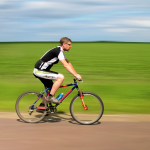It’s mostly rookie cyclists who don’t spend enough time developing their pedaling technique, but even some experienced cyclists could work on it, too. While many triathletes spend a lot of time and attention getting in the miles, doing speedwork, finding an aerodynamic bike and all the best equipment, very few cyclists include technique work in their training programs. Many people learn how to ride a bike at a young age, and therefore are comfortable riding. But when it comes to road cycling, you’re dealing with clipless pedals. That means instead of just pushing down, like you would have on your bike when you were a kid, now you can pull up with your pedals, too.
Cycling might seem easy – all you have to do is rotate your pedals. But there’s lots of technique required when it comes to cycling, too. Maybe not as much as swimming or running, but technique drills can certainly help you become a better cyclist. While pedaling, people tend to focus on the “push,” where you push the pedal down, and forget about the “pull” phase when the pedal comes back up. The goal isn’t necessarily to generate more speed because you’re pushing and pulling on the pedals, but it’s also to release weight on the other pedal that you want to push down. By pulling your leg up you are taking the leg’s weight off the pedal.
There are a few exercises you can do to help develop your pulling phase. The first is the easiest: just pay attention to it. By noticing how you move your legs while cycling, you automatically feel how you can use the pull to make your legs rotate more efficiently. If you do this regularly, it will start to feel more natural to use your strength both in the push- and pull phase. To see how much of an effect it has, try riding up a gradual hill. When you are riding on flat roads it is harder to tell whether a slight change in technique affects your speed.
Another exercise you can do to pay more attention to your cycling technique is one-legged pedaling drills. These will force you to make the best use of both the push and pull phases. Of course you need to work on both legs. Another method to work on your pedal stroke is to do parts of your training in a slightly higher or lower gear than you are typically comfortable with. This helps you practice your technique at different pedaling cadences.


